Don't wanna be here? Send us removal request.
Photo
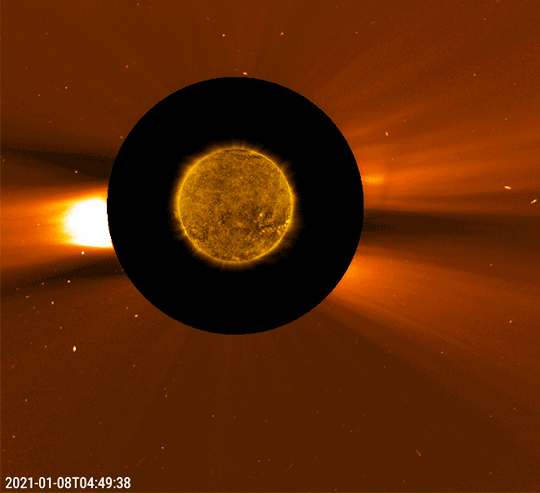
There’s been a lot of activity in the western limb (right-side) of the Sun these past few days. Two filament eruptions and possibly a third, slow-moving CME on the far-side of the Sun.
161 notes
·
View notes
Photo
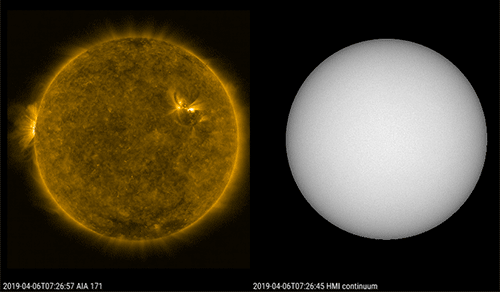
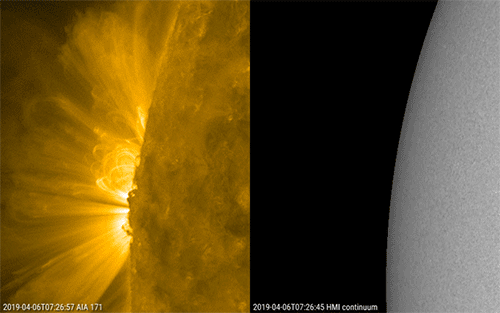
This active region (AR 12738) on the Sun's eastern limb is home to a cute unipolar sunspot.
354 notes
·
View notes
Photo
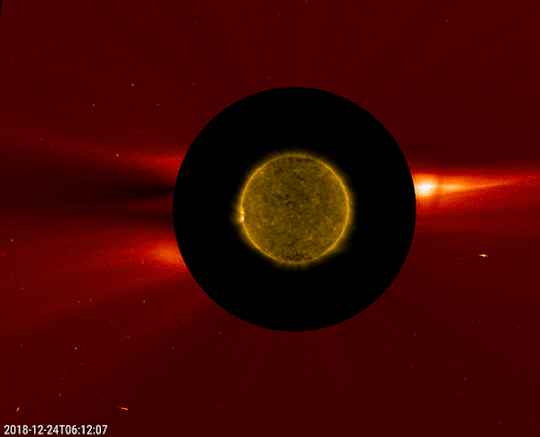
The Sun released this weak non-Earth directed coronal mass ejection (CME) on December 24, 2018.
Merry Xmas!
493 notes
·
View notes
Photo
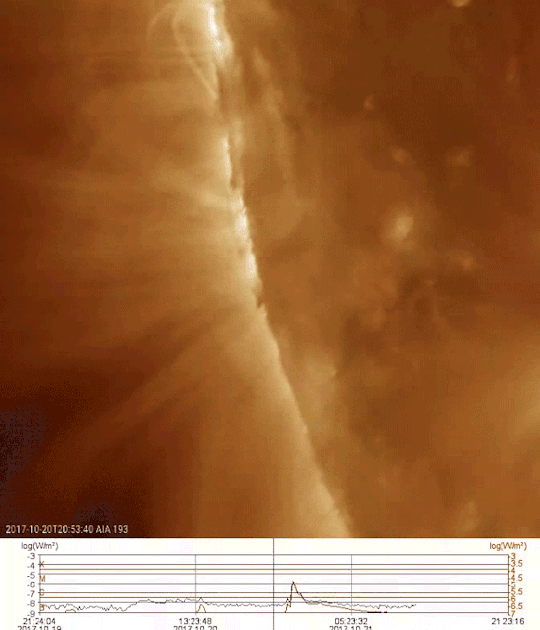
An eruptive M-class flare followed by a global coronal wave.
1K notes
·
View notes
Photo
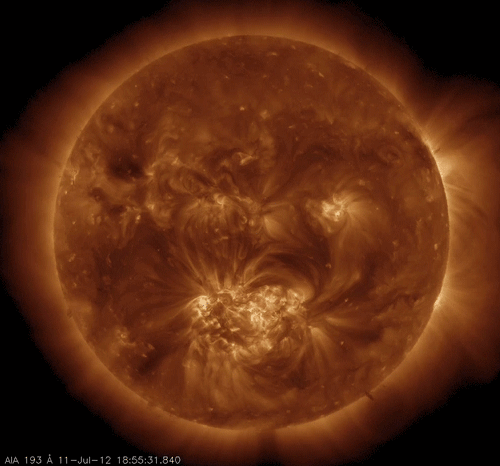
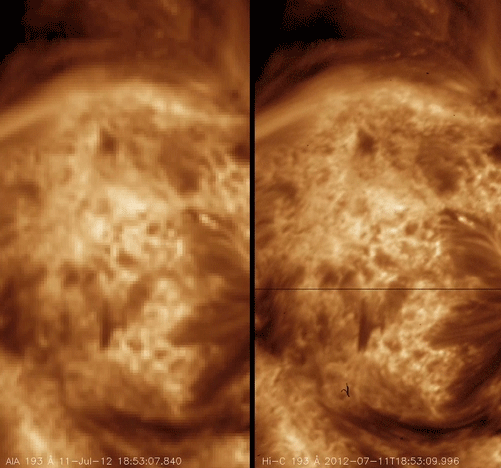
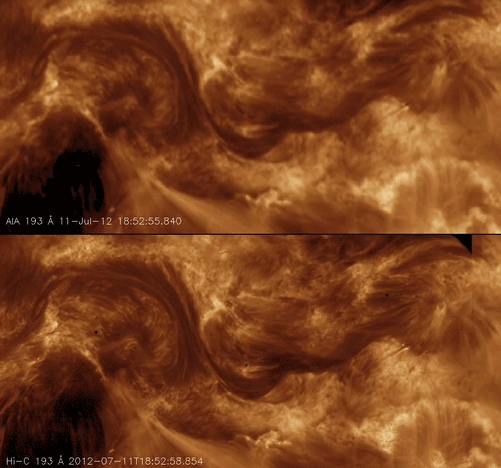
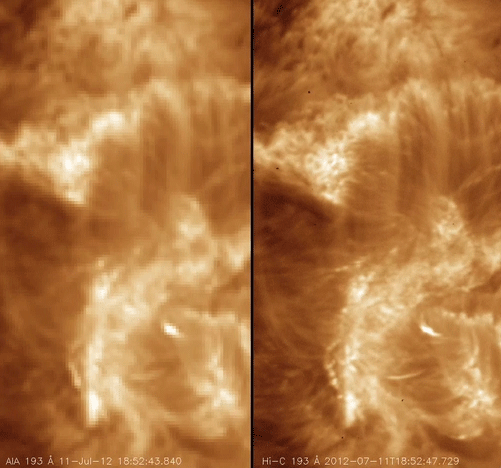
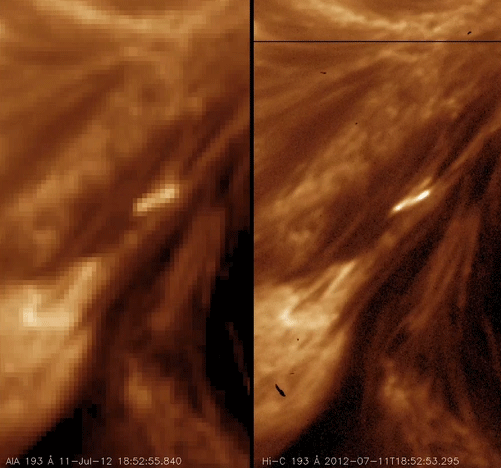
Spatial resolution of Hi-C compared to that of SDO/AIA
The highest resolution data from the corona we currently get on a regular basis are from the Atmospheric Imaging Assembly (AIA) on the Solar Dynamics Observatory (SDO), however, even higher resolution images have been obtained during a sounding rocket flight by the High-resolution Coronal Imager (Hi-C). The scientific objectives of Hi-C are central to the goal of understanding the Sun’s activity and its effects on the terrestrial environment by providing unprecedented views of small-scale structures in the solar atmosphere.
The Hi-C instrument is scheduled to launch on a sounding rocket May 29, 2018. This will be the third launch of the Hi-C instrument.
Image credit: MSFC/NASA
2K notes
·
View notes
Photo
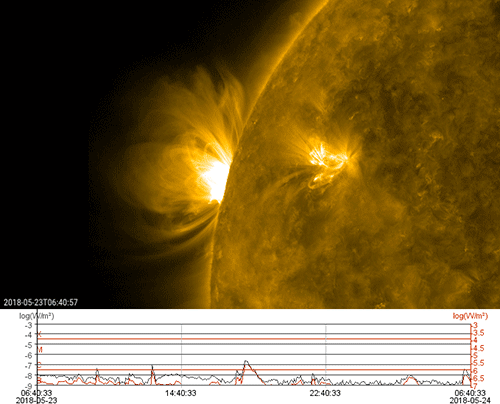
New active region producing C-class flares
426 notes
·
View notes
Photo
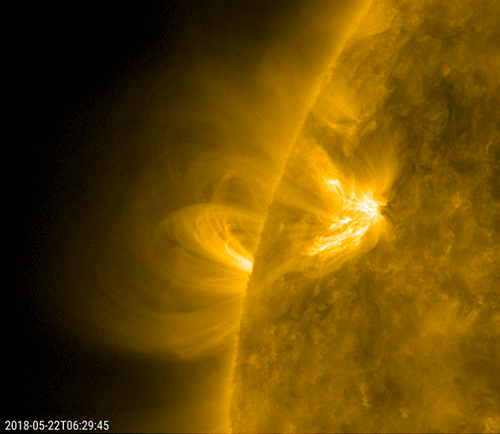
Finally! An eruptive new flare region is rotating into view!
297 notes
·
View notes
Photo
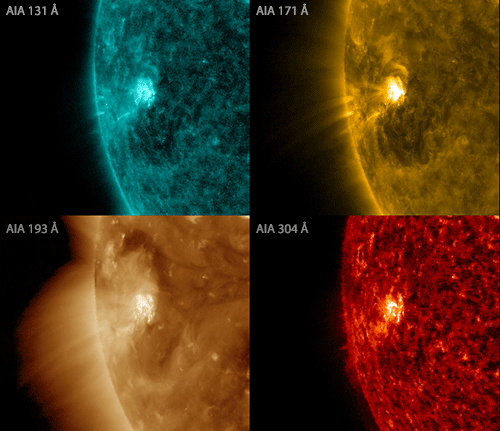
Multispectral SunDay
519 notes
·
View notes
Photo
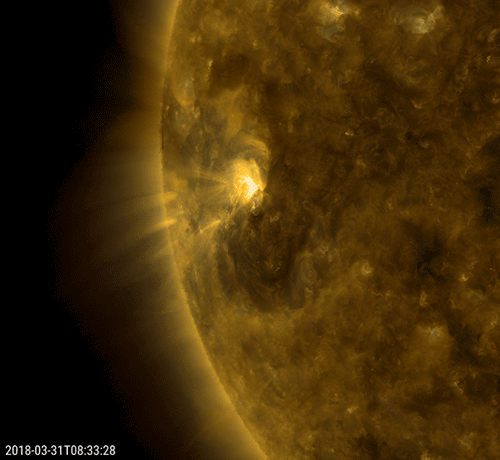
B-class flare from solar active region 12703
323 notes
·
View notes
Photo
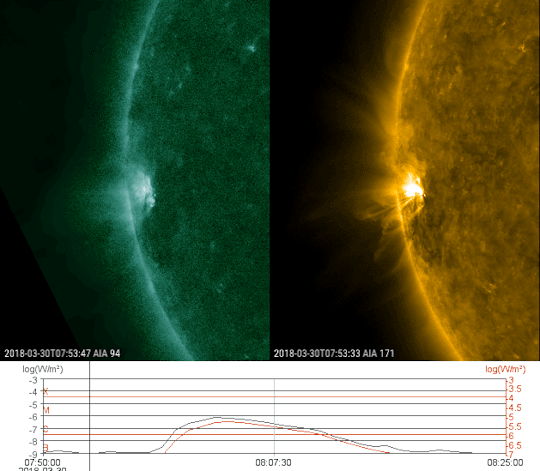
C-class (4.6) flare eruption on the eastern limb of the Sun.
306 notes
·
View notes
Photo
Happy World Poetry Day!

Richard Feynman (above) included a poem in his address to the National Academy of Sciences:
I stand at the seashore, alone, and start to think.
There are the rushing waves mountains of molecules each stupidly minding its own business trillions apart yet forming white surf in unison Ages on ages before any eyes could see year after year thunderously pounding the shore as now. For whom, for what? On a dead planet with no life to entertain. Never at rest tortured by energy wasted prodigiously by the Sun poured into space. A mite makes the sea roar. Deep in the sea all molecules repeat the patterns of one another till complex new ones are formed. They make others like themselves and a new dance starts. Growing in size and complexity living things masses of atoms DNA, protein dancing a pattern ever more intricate. Out of the cradle onto dry land here it is standing: atoms with consciousness; matter with curiosity. Stands at the sea, wonders at wondering: I a universe of atoms an atom in the Universe.
Image source
3K notes
·
View notes
Photo
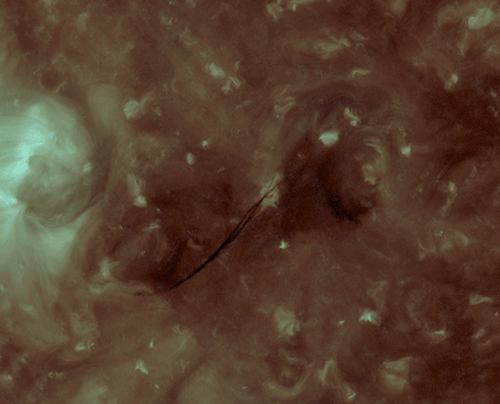
Filament liftoff followed by coronal dimming (black regions) and post-eruptive arcades (March 6, 2018).
135 notes
·
View notes
Photo
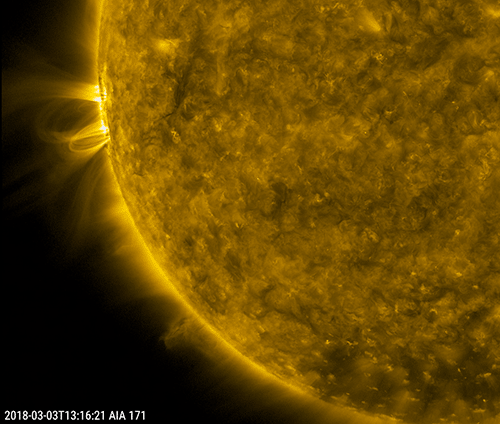
Sunspot region AR2699 is back! AR2699 produced a long-duration C-class flare, and an Earth-directed CME on its previous rotation but now it’s just a plage region. There is also a lovely coronal prominence cavity on the south-east limb of the Sun.
#sun#solar activity#space#astronomy#gif#solar prominence#coronal prominence cavity#polar crown cavity#sdo#nasa
424 notes
·
View notes
Photo
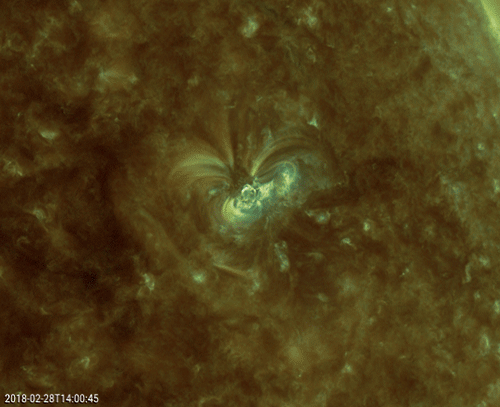
Active region 12700 produced a small B-class flare on Feb. 28.
170 notes
·
View notes
Photo
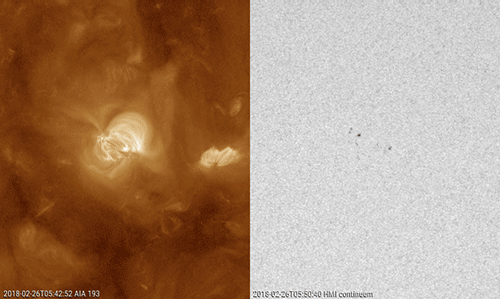
The evolution of a weak active region on the Sun. Region 2700 is a simple beta (bipolar) magnetic group.
#active region#sun#space#astronomy#gif#sunspots#magnetic field#coronal loops#HMI intensitygram#AIA193#AR12700
469 notes
·
View notes
Photo
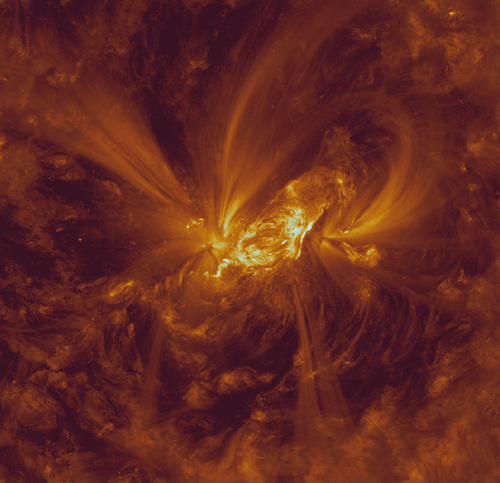
Flare ribbons & post-flare loops
Region 2699 produced a long-duration C-class flare and released an Earth-directed CME on Feb. 11-12, 2018. The solar storm arrived at Earth on Feb. 15.
#solar flare#post flare loop#cme#space weather#solar storm#G1#geomagnetic storm#sun#space#astronomy#gif#aia171#aia304
619 notes
·
View notes
Photo
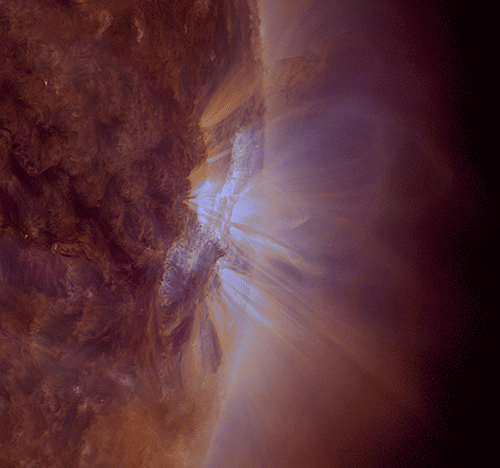
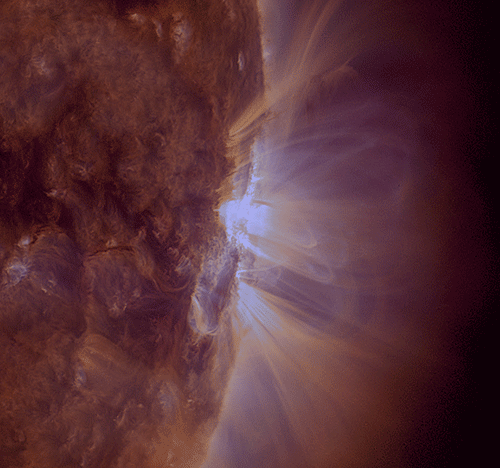
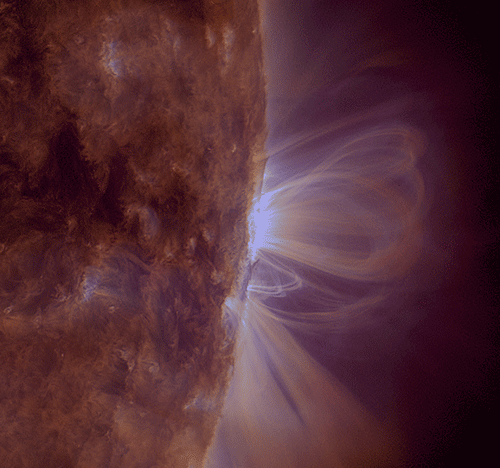
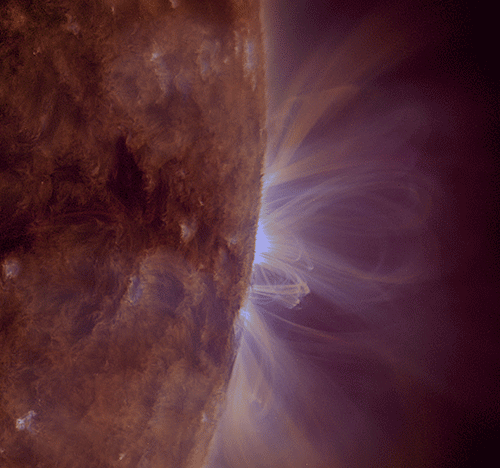
Active region 12699 is rotating out of view over the western limb. So long, and thanks for all the flares (and CME)!
860 notes
·
View notes